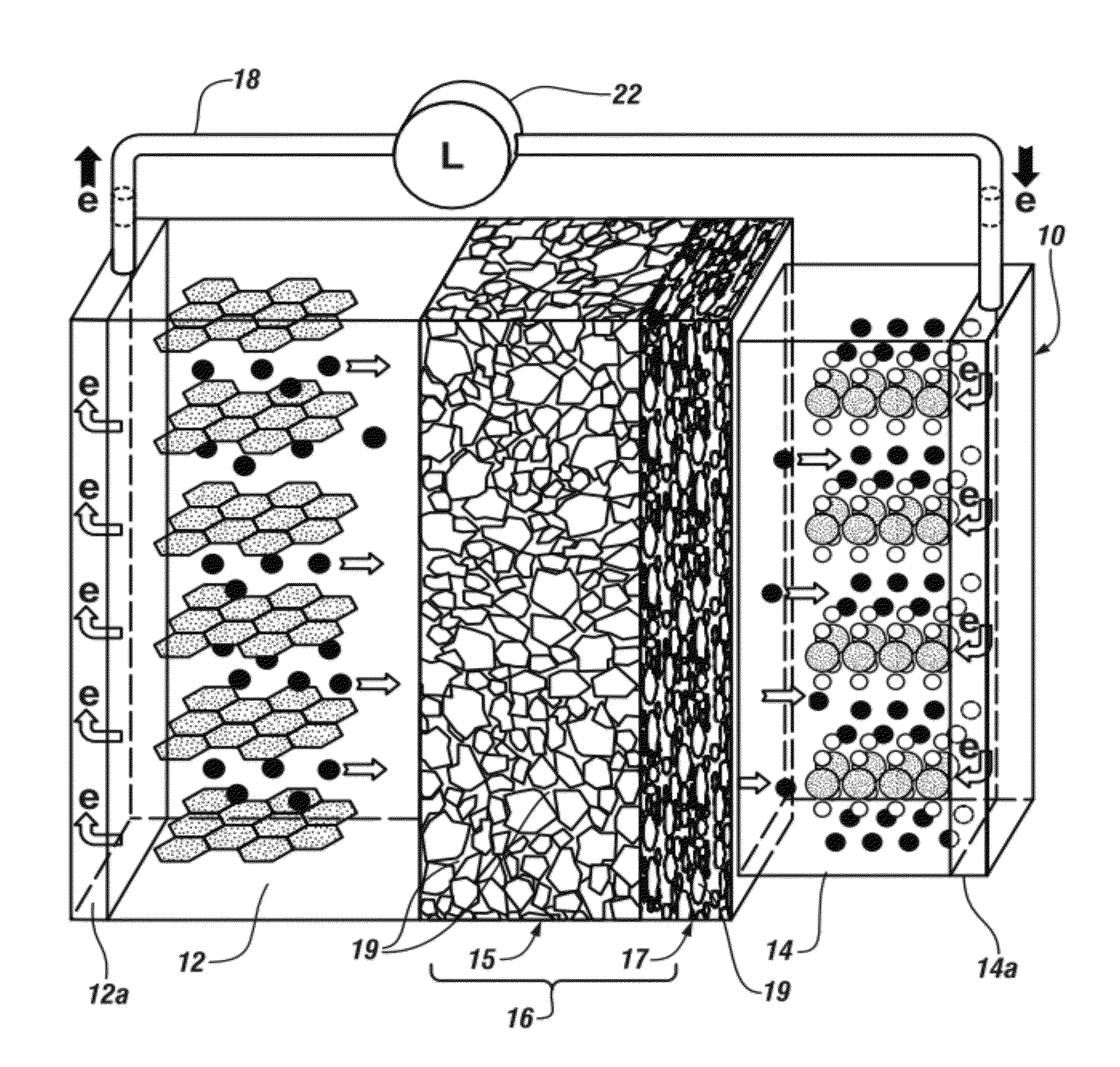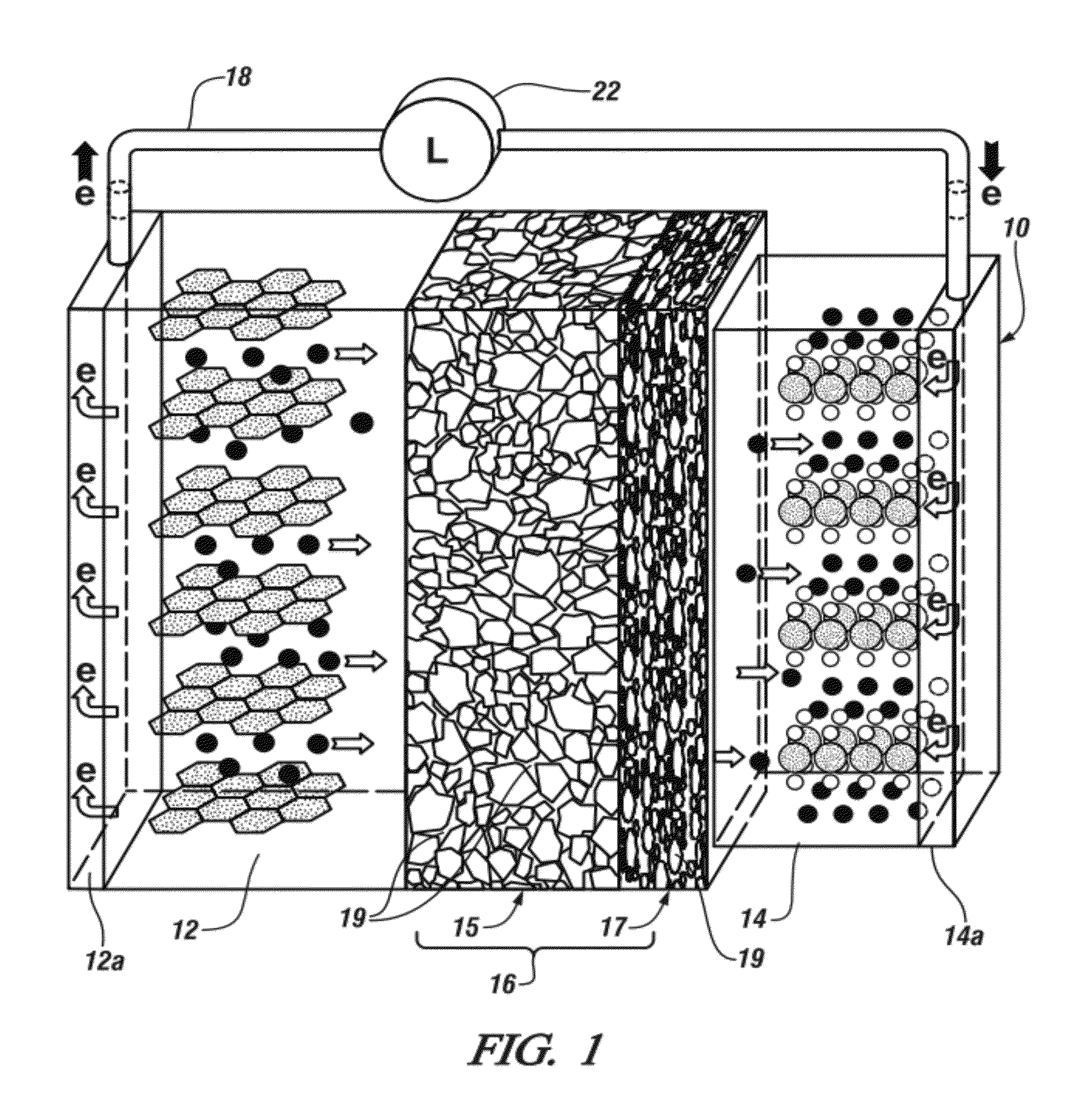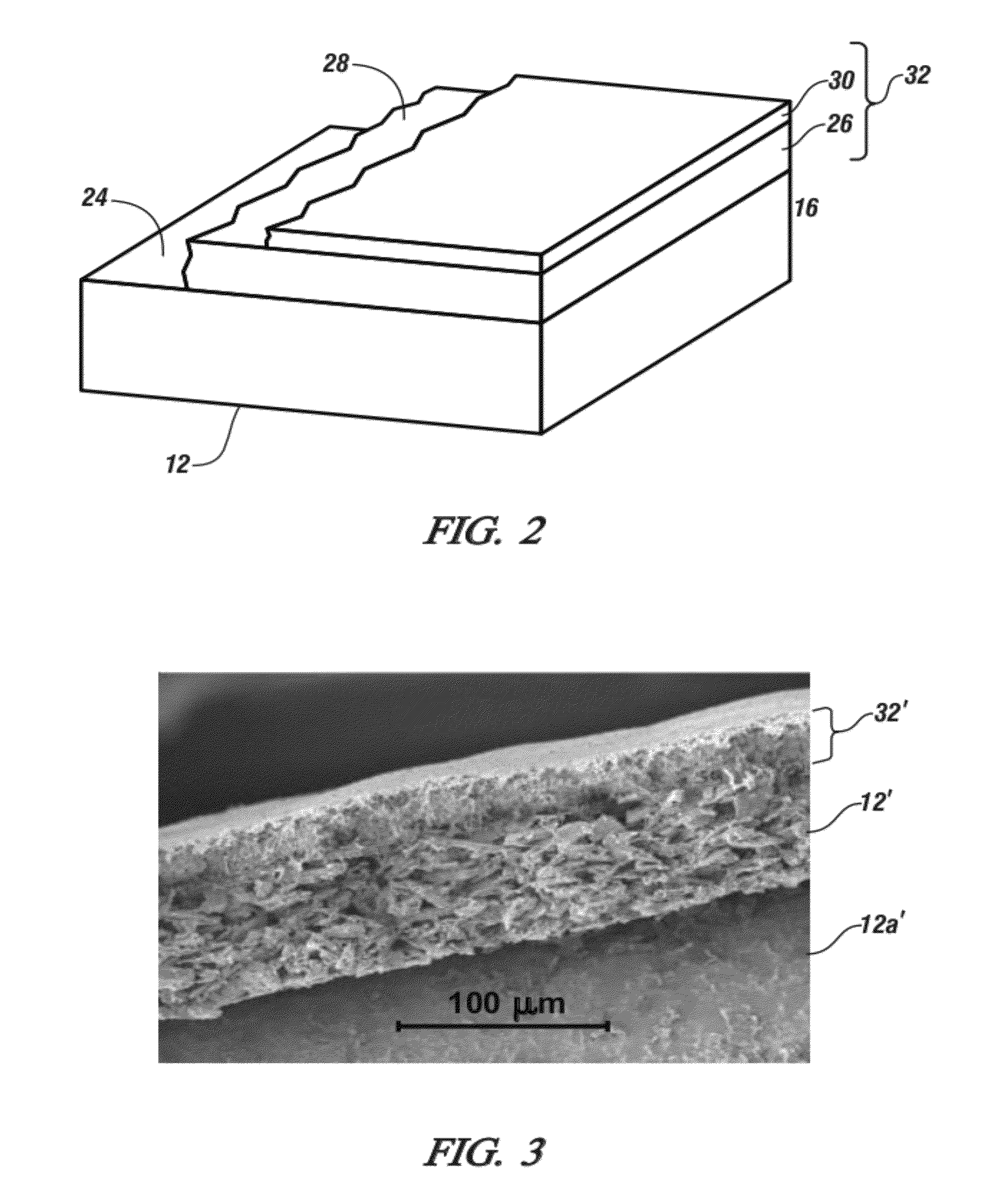Integral bi-layer separator-electrode construction for lithium-ion batteries
- Summary
- Abstract
- Description
- Claims
- Application Information
AI Technical Summary
Benefits of technology
Problems solved by technology
Method used
Image
Examples
Embodiment Construction
[0034]The following description of the embodiment(s) is merely exemplary in nature and is not intended to limit the invention, its application, or uses.
[0035]Embodiments of this invention are separators, and practices to fabricate such separators, intended to be positioned between the facing anode and cathode of a lithium ion battery. Such separators prevent electronic conduction between the facing electrodes but enable transport of lithium ions contained in the liquid non-aqueous electrolyte from anode to cathode as the cell discharges and from cathode to anode as the cell is charging. In current practice single-layer separators are commonly used and may comprise a polyolefin, for example polypropylene or polyethylene. Such separators are porous and wet by the cell electrolyte and so incorporate electrolyte for transport of lithium ions through the separator while preventing electronic conduction. These, single layer, porous, polyolefin separators, particularly at elevated cell ope...
PUM
| Property | Measurement | Unit |
|---|---|---|
| Thickness | aaaaa | aaaaa |
| Thickness | aaaaa | aaaaa |
| Length | aaaaa | aaaaa |
Abstract
Description
Claims
Application Information
 Login to View More
Login to View More - R&D
- Intellectual Property
- Life Sciences
- Materials
- Tech Scout
- Unparalleled Data Quality
- Higher Quality Content
- 60% Fewer Hallucinations
Browse by: Latest US Patents, China's latest patents, Technical Efficacy Thesaurus, Application Domain, Technology Topic, Popular Technical Reports.
© 2025 PatSnap. All rights reserved.Legal|Privacy policy|Modern Slavery Act Transparency Statement|Sitemap|About US| Contact US: help@patsnap.com



